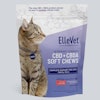
The COVID-19 pandemic has given a huge boost to e-commerce, including for pet food, as people hunkered down at home and avoided trips to brick-and-mortar stores, or couldn’t find what they wanted in stock at stores.
In March 2020 alone, online sales of pet food in the U.S. increased 51% over February 2020, according to Nielsen. March marked the peak of pandemic-related stocking up and hoarding, so the growth rate has likely slowed. Yet a survey from Commercial Café showed that 28% of pet owners reported they would order pet food online, up from 15.8% pre-pandemic. In addition, Packaged Facts now projects online sales of pet products overall to rise by 10%, reaching US$13.5 billion by end of year.
And that builds on previous double-digit growth for several years preceding 2020: a 24% compound annual growth rate from 2014 to 2019, according to Packaged Facts. That growth rate is likely to only increase, because most analysts expect e-commerce growth to continue post-pandemic, possibly at even higher rates. That applies to all product categories, including pet food and pet care.
In the Commercial Café survey, 83% of respondents said they now plan to purchase certain products online that they previously bought in stores. Among respondents who purchased online monthly pre-pandemic, 56% reported now making weekly purchases. Further, 54% of respondents spent US$100 to US$500 online pre-pandemic; of those, more than 30% said they now plan to increase their monthly online budgets to US$500 to US$1,000.
E-commerce growth may also mean DTC growth
Given this rapid and ongoing growth, some consumer product goods brands are expanding into online direct-to-consumer (DTC) sales, bypassing the Amazons of the world. PepsiCo made waves in late May by announcing it’s offering several of its well-known food and beverage brands via two DTC websites, PantryShop.com and Snacks.com. This move actually lags that of other CPG companies, such as Nestlé with its home delivery business of Nespresso coffee and ReadyFresh water and beverages, and Unilever’s DTC distribution of its T2 tea, Maille condiments and Ben & Jerry’s ice cream, according to an article by Christopher Doering on FoodDive.com.
Before this point, DTC was growing albeit slowly: Doering cited figures from Global Data showing that in 2014, only 1.4% of consumers reported using DTC once in the previous 12 months to purchase food or beverages; that had risen to 5.8% by 2018. The pandemic may spur growth of DTC faster and higher: Shutdowns of nonessential businesses even drove some unlikely companies to pivot to DTC, like breweries and tulip farms, just to stay in business.
DTC a natural for pet food brands?
In late 2018, You.gov conducted a survey asking U.S. internet users how much they expected to purchase from DTC companies in the next five years: 36% of respondents said they planned to buy up to 19% that way, with 24% saying 20-39%, 22% saying 40-59% and 13% saying 60-79%. Five percent said they planned to purchase 80-100% from DTC businesses.
This data was presented by Jodi Watson, industry consultant and vice chair of True Leaf Pet, during Petfood Forum Europe 2019. She made the case for pet food brands to consider establishing DTC programs as at least one channel of distribution, sharing other data showing that 57% of all product manufacturers currently embrace DTC models because consumers want and expect them.
While channel disruption has been a force in pet food for some time now, that shouldn’t preclude pet food brands from considering DTC, Watson said. She acknowledged concerns on the part of some manufacturers of conflicting with other channels they sell through, but whether such conflict is real or perceived, she said that once manufacturers start selling DTC, they report:
- Sales growth via all partners (reported by 54% of total product manufacturers, according to Forrester Research);
- Improved brand awareness, reported by more than 50%;
- Early market feedback on their products before pitching them to retailers (14% reported this).
Of course, DTC isn’t new for pet food: A number of brands have been springing up and seemingly thriving by offering home delivery of their pet foods. Those are often custom diets in non-traditional formats; what is the potential for more traditional products such as dry or wet pet food, or treats?
With consumers becoming more familiar with and using DTC, and pet food e-commerce continuing to soar, Watson may be right: DTC may be an option for pet food brands to consider.
View our continuing coverage of the coronavirus/COVID-19 pandemic.


















